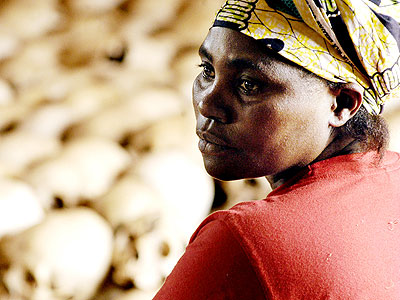Insight
Condemned to live: Coping with post-Genocide trauma
Joyeuse Majyambere lived in Gishushu, a Kigali City suburb in 1994. At the dawn of the year, the perpetrators of the 1994 Genocide against the Tutsi started setting up bases around their neighbourhood. By March, things were getting edgy.
“I got home one evening and found they had put up their flag in our neighbour’s compound. My husband came back later in the night; he had miraculously escaped death at the hands of militiamen wielding machetes. They cut him badly,” she recalls.
“It didn’t stop there though; they came back the next day and beat us up. I still have scars on my back,” Joyeuse adds, stretching a hand to massage her back.
Joyeuse and her husband were rushed to the hospital and treated. They were lucky to survive.

A survivor in a sad mood in this an undated picture taken at a Genocide memorial site. (Internet photo)
